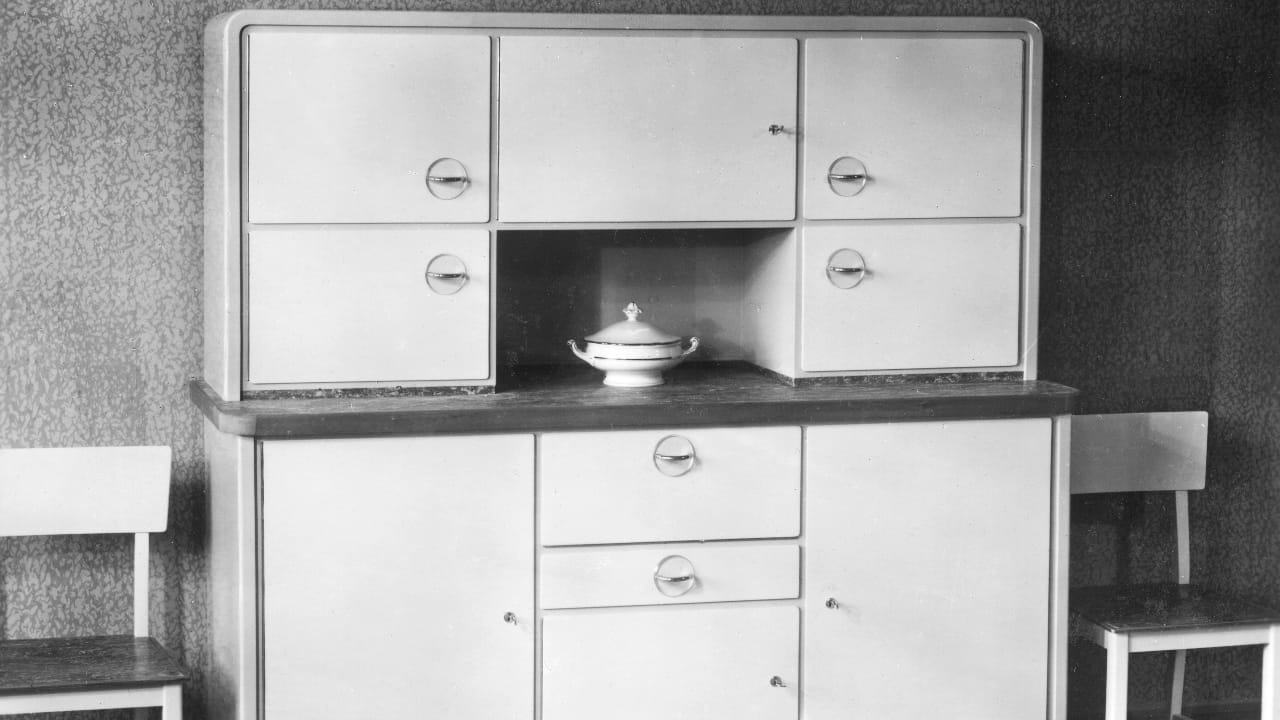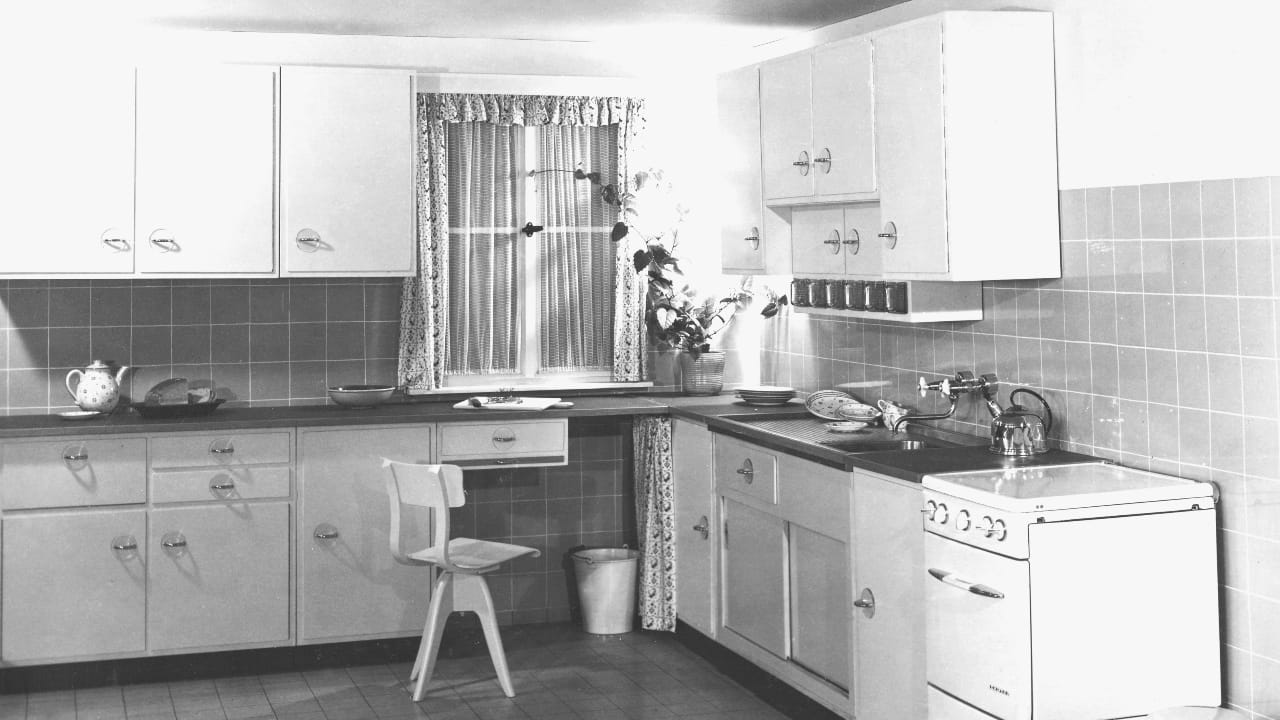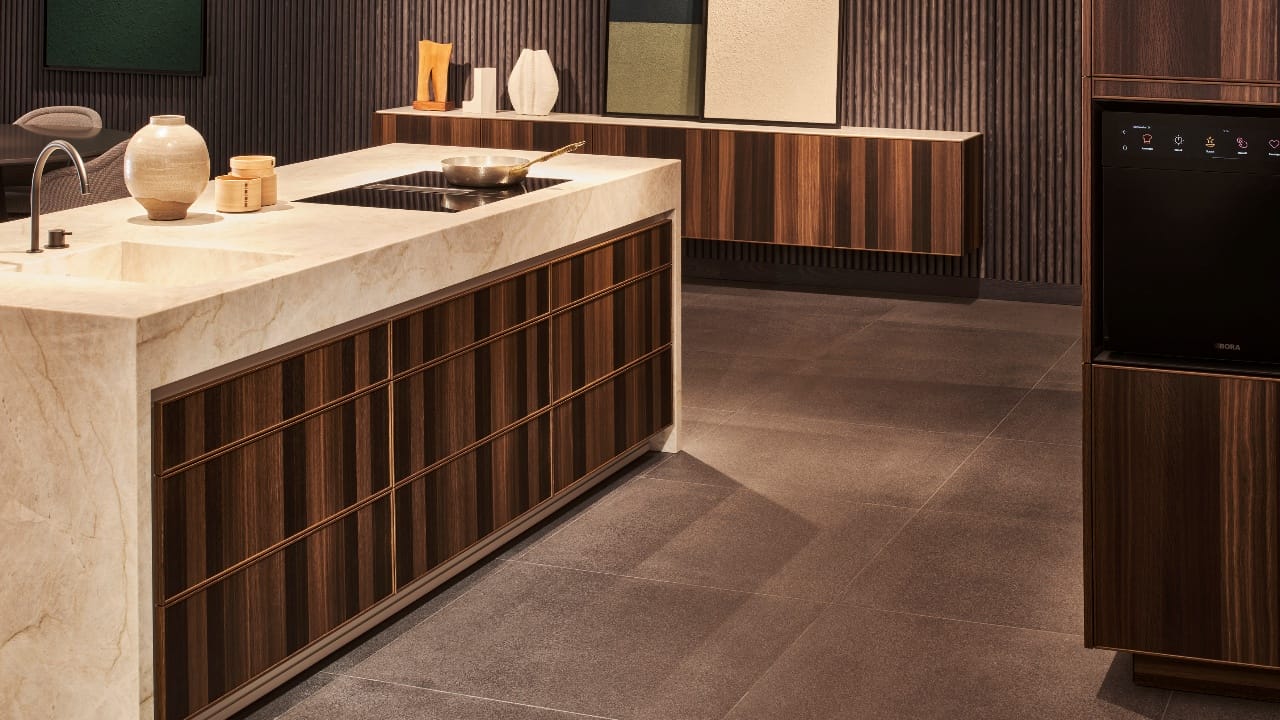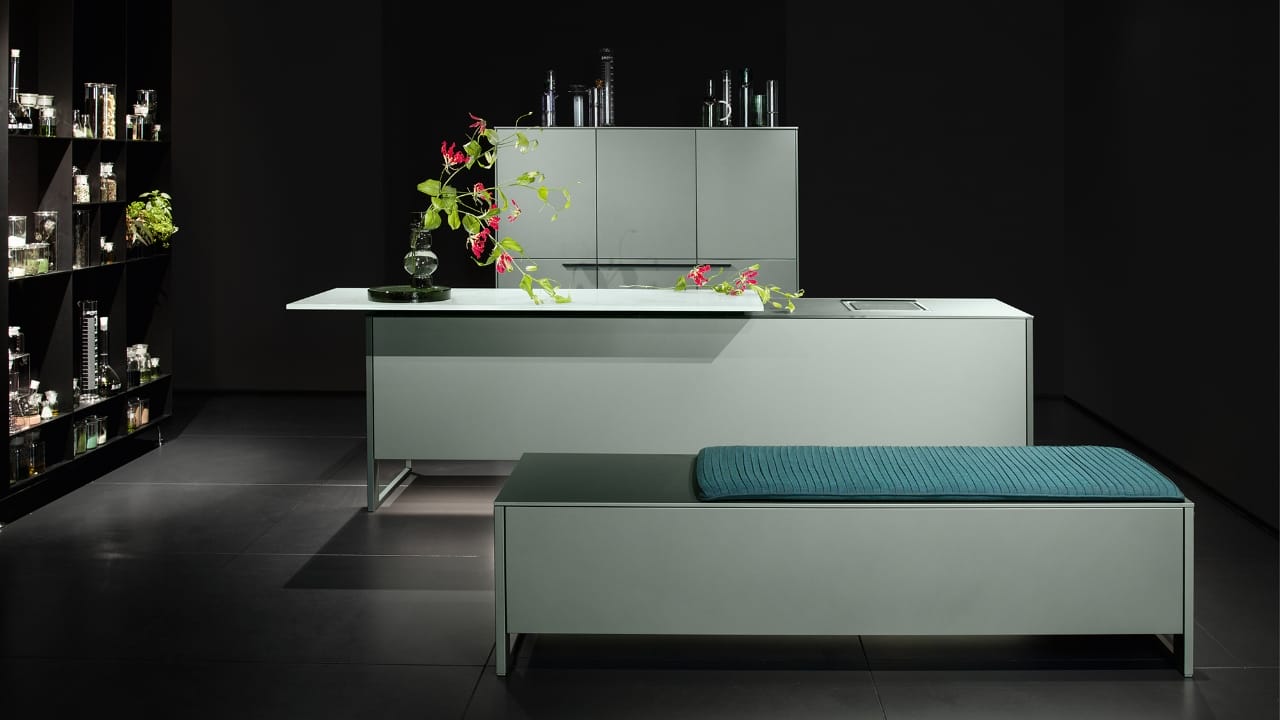The origins of Poggenpohl began with Friedemir Poggenpohl, who first founded the family business in Herford, Germany, in 1892. It started as a carpentry business but soon evolved with Poggenpohl’s aspirations of enhancing the kitchen. Over the course of its extensive history, the German manufacturer has consistently aligned itself with the founder’s vision, continuously developing revolutionary creations to enhance the functionality and aesthetics of culinary spaces.
In 1928, Poggenpohl achieved a significant milestone with the invention of its ‘Reform Kitchen’. This groundbreaking design featured interconnected cabinets, functional interior fittings and an innovative painted and sanded surface—a development that would later define the concept of built-in kitchen cabinets.

Just two years later, Poggenpohl introduced a new polishing technique to the industry, branding it the ‘Zehner-Schleiflank’, which translates to ‘ten-varnish’. As its name suggests, the technique undergoes 10 processes to yield high-gloss lacquer surfaces that look visually pristine, a stark contrast to the kitchen surfaces of 1930 that were predominantly crafted from wood and were highly susceptible to ageing and staining. This innovation helped forge the brand’s reputation, extending it beyond that of merely a quality provider with unexpected ideas.

Then, in 1950, Poggenpohl made yet another revolutionary advancement by introducing the first ‘Form 1000’ fitted kitchen, refined from the elements of its ‘Reform Kitchen’. Its cabinets were meticulously crafted with a streamlined design, and countertops were designed to curve with a 90-degree bend to optimise and offer ample space. Through consistent enhancements, the ‘Form 1000’ eventually evolved into the ‘Form 2000’ kitchen, showcasing sophisticated built-in cabinets that closely resemble the contemporary designs we see everywhere today.
Another milestone in Poggenpohl’s history occurred in 1968, when the German manufacturer once again took the industry by storm as it presented its first solid wood kitchen, paving the way for the widespread embrace towards wooden kitchens in the 1970s.

By the beginning of the 21st century, Poggenpohl introduced new design collections, starting with the development of the +SEGMENTO, which featured contemporary elegance with plenty of freedom to be infused with personal touches. With its linear design, it boasts a pure and calm setting. For instance, the monolith kitchen island is equipped with cabinets without handles, reducing its appearance to clean and fine lines. This design concept is minimal in every way, allowing for its high-quality materials to convey the narrative of its structure. For the +SEGMENTO, simplicity is the way to go.

Then in 2005, Poggenpohl unveiled a new design known as the +MODO, which was made in collaboration with visual artist Jorge Pensi. The play with dimensions—having the worktop and cabinetry offset one another—is what makes the +MODO distinctive. The raised worktop sits aloft the cabinets, presenting itself as a platform to set the stage for gastronomic pleasures to come. Just beneath the worktop, pull-out shelves create free space for an open presentation area for food and personal accessories. Diverging from the simple aesthetics of the +SEGMENTO, the +MODO embodies maximalism at its finest.
The most recent addition to Poggenpohl’s collection is the +VENOVO. Launched in 2018, the collection has received several awards for its outstanding design—namely, the German Design Award 2019 and the ‘Best of Best’ winner in the kitchen and household category at the ICONIC Awards. Its cabinetry is lifted upwards by side frames while an additional platform hovers over the worktop, giving it the illusion of a floating island. The +VENOVO stuns even as a solitary element and, just like a floating island, it possesses a sense of freedom within the space, dissolving the traditional boundaries between kitchen and living spaces.

Today, Poggenpohl stands as a pivotal influence in luxury kitchen architecture. Shaping the course of kitchen history for more than a century, Poggenpohl is not only a pioneer in modern kitchen designs but also continuously challenges itself to elevate the standards of excellence. With 244 showrooms spread across the globe, the first Poggenpohl finally made its debut at The Plan Co. in Kuala Lumpur last October.
Upon entering, a glamorous +MODO kitchen island stuns in luxurious black and gold. The ‘imbalanced balance’ design of Jorge Pensi’s masterpiece exemplifies German engineering at its finest. Delving further into the showroom, a captivating showcase of the +SEGMENTO is displayed, radiating sophisticated grace with effortless simplicity. Meanwhile on the second floor, guests can view solitary pieces that can be integrated into Poggenpohl’s design concepts or simply act as stand-alone elements. The showroom beautifully embodies the expression of kitchen architecture, precision craftsmanship and outstanding innovations—but, most importantly, it reflects a deep understanding and appreciation for the finer things in life.




